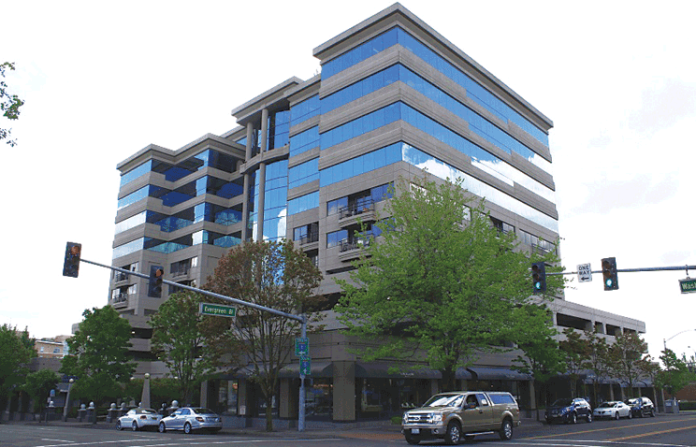At Vancouver’s Riverview Bank it used to take about two hours for the bank’s compliance team to review a post-closing mortgage file.
Now, thanks to the complexity and volume of bank regulatory reforms, the same review process has increased to a minimum of three hours. But that’s only part of the story.
“A significant amount of time goes into preparation, interpretation and implementing complex rules that, in general, impact commercial and residential lending teams,” said Crystal Pacheco, Riverview vice president, audit manager.
And it’s doesn’t end there. Areas outside of lending are set to be impacted by rules that have not been executed yet.
Pacheco is talking about the massive Dodd-Frank Wall Street Reform and Consumer Protection Act passed by the U.S. Congress in 2010.
Since then banks, large and small, have been grappling with the bill’s 400 rules, 2,300 pages of compliance regulations and a growing volume of legal language attached to each piece of regulation.
The rules affect mortgage lending, bank investments and acquisitions and emphasize consumer protection in a way that banks say is overkill.
The industry blames this “onerous” regulatory burden for stifling lending and slowing the nation’s recovery from the Great Recession.
Now, with the Trump Administration vowing to rein in Dodd-Frank, community banks such as Riverview are hoping for relief.
“The biggest problem is that Dodd-Frank is a one-size-fits-all bill,” Riverview CEO Pat Sheaffer said. “We are not Bank of America or Wells Fargo. For us, Dodd-Frank scrutiny requires a level of auditing that makes our mortgage loan department nearly unprofitable,” he said.
Hadley Robbins, executive vice president of Tacoma-based Columbia Bank, agrees that large national financial institutions should have regulations that “are different from the community banking world.” Robbins mentioned Dodd-Frank’s hundreds of regulations and 24,000 pages of legal interpretation that goes with them.
“I would like to see if the (Dodd-Frank) regulations are achieving the targets they were designed to achieve,” Robbins said. “There were consequences that couldn’t be anticipated.”
James Pishue, president and CEO of the 70-member Washington Bankers Association, has been hearing these complaints and concerns for the past six years.
“Dodd-Frank regulatory requirements created a real problem for community banks,” Pishue said. “The money that has gone into compliance costs could have been better used to make loans. A well-capitalized bank that keeps loans on its own books should have a safe harbor from all the qualified mortgage rules and be able to file shorter quarterly reports,” he said.
Sheaffer, Robbins and Pishue do not expect that even a Republican-controlled pro-business Congress can completely dismantle Dodd-Frank. The hope is that smaller banks would be exempt from some Dodd-Frank rules meant for big banks.
The banking industry, Pishue said, is supporting the TAILOR Act reintroduced in the U.S. Senate in January that would require bank regulation rules to be tailored to fit financial institutions’ business models, size and risk profiles.
Reform bill in the works
The bill, crafted with the assistance of state bankers associations and the American Bankers Association, mirrors a House version introduced last year and approved by the House Financial Services Committee.
“What we’re hoping for is that we can step back and look at all the regulations that were passed in the wake of the financial crisis and decide what makes common sense,” Pishue said. “Community banks operate with a less complicated business plan … the Dodd-Frank created a real problem for them, very expensive.”
In addition to bank regulation reform, community banks are calling for a more inclusive and accountable Consumer Financial Protection Bureau (CFPB), also created by Dodd-Frank.
“Right now, the CFPB operates without oversight, writing its own rules,” Pishue said. “We would like to see the bureau governed by an oversight panel to see that its rules protect consumers but don’t overburden any one set of financial institutions.”
In general, Pishue is optimistic that there will be some reform.
Meanwhile, the expected loosening of regulatory rules, along with a growing economy and improved consumer confidence are boosting bank operations and share price.
Columbia Bank, which operates 150 branch offices in Washington, Oregon and Idaho, has seen its share price increase of 43 percent to $40.45 in the past 52 weeks.
Riverview, with 17 branches in the Vancouver-Portland area and assets of $984 million, has seen an 82 percent increase in its share price to $7.75. The bank’s revenue is up 8 percent.
“How much we see in the way of bank regulation reform depends on where on the Trump agenda lands and how much push-back there is on the changes,” Sheaffer said.
Meanwhile, he says he feels sorry for his loan officers when they fail to check a box while working their way through the Dodd-Frank mortgage loan compliance rules.
“It means they’ve got to start over,” he said. “It is frustrating for customers … it’s heavily regulated reporting that goes nowhere.”







